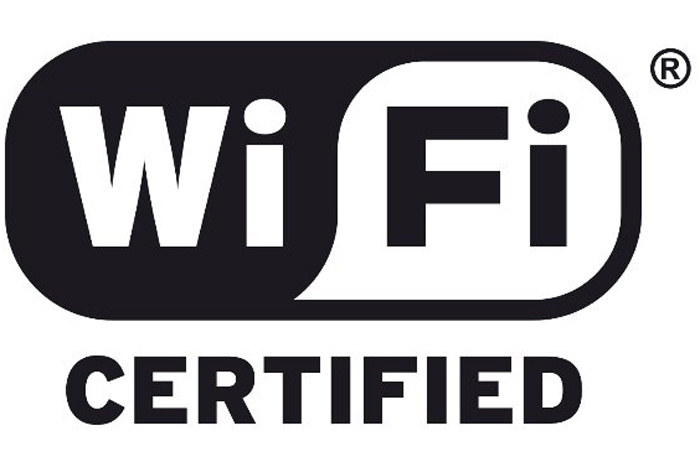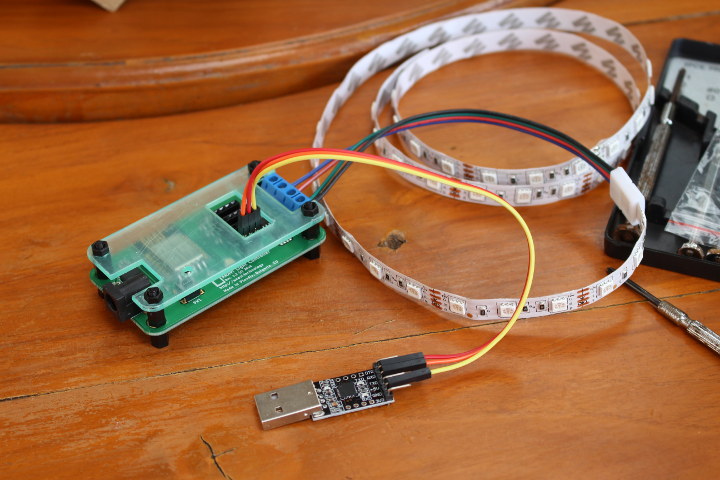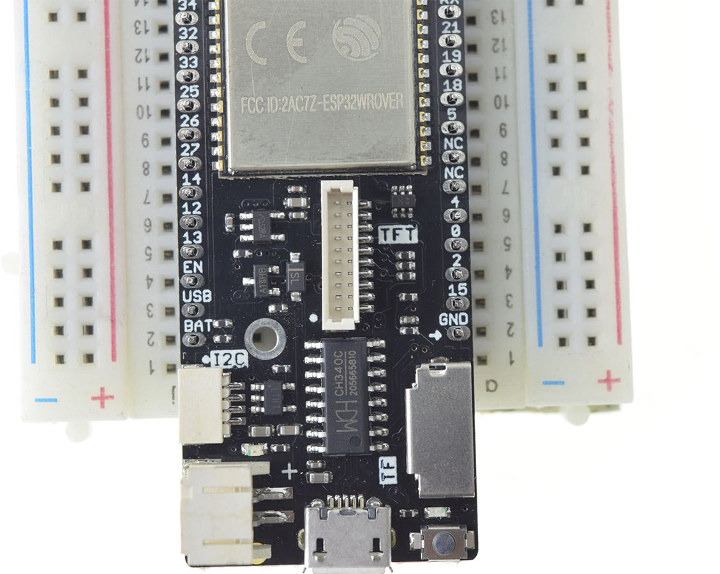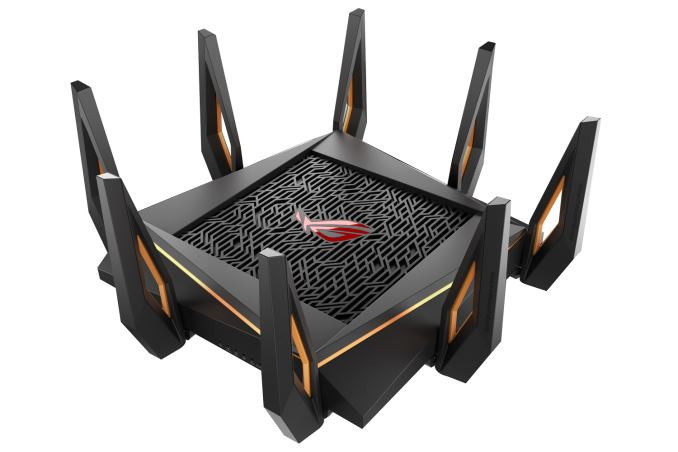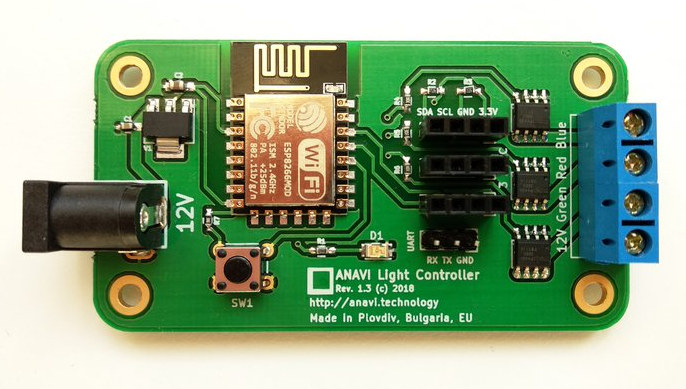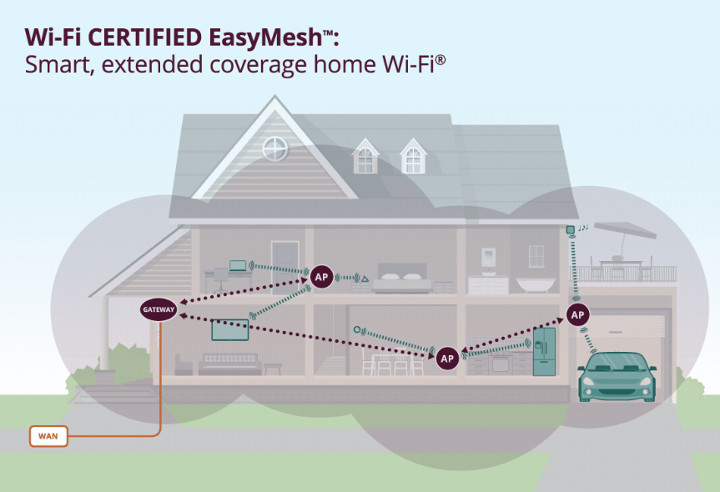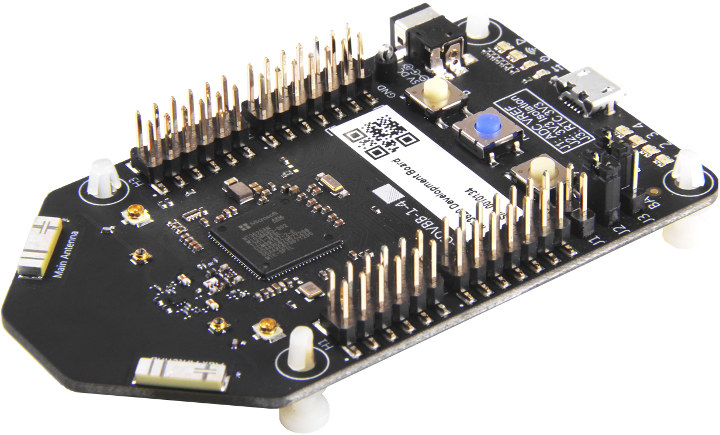While I still see some open WiFi access points from time to time in the wild, most people are using WPA2 authentication to connect securely to their own WiFi router, or public ones instead of WEP that has been found to be insecure many years ago. WPA2 is not quite secure as it once was, as last year WPA2-PSK was cracked. It’s not that bad, as it may still take several days with a strong password requiring a large password file for the hack to work. Still a new revision was needed, and the WiFi alliance has just introduced Wi-Fi WPA3 security. Just like with WPA2, there are personal and enterprise modes for WPA3 WPA3-Personal WPA2-Personal Pre-shared Key (PSK) is replaced with Simultaneous Authentication of Equals (SAE), which is said to be resistant to offline dictionary attacks where an adversary tries possible passwords without further network interaction. WPA3-Personal/SAE enables: Natural […]
Tail it is a Family of WiFi & Cellular GPS Trackers for Things, Pets, and Bicycles (Crowdfunding)
We’ve previously written about Ping, a tiny Cellular GPS tracker that promised to last 3 months on a charge. The raising money part of the crowdfunding campaign itself was successfully with over one million dollars raised, but as with many such campaigns there have been delays, and some people still have to receive theirs, not to mention people complaining about poor battery life and other issues. But there seems to be another option now with Tail It Technologies now offering four different “Tail it” cellular GPS trackers (with WiFi too) for things, pets, and even one designed specifically for bicycles. The company has already sold their devices to thousands of customers in Norway, so they should be working, and on-time delivery should hopefully not be an issue. All four GPS trackers come with 2G, 3G, 4G, and WiFi connectivity, a 5-meter accuracy, and share the same electronics and firmware. Here’s […]
ESP8266 RGB LED Strip Control with ANAVI Light Controller, Arduino, MQTT, and HTML5
A few months ago I reviewed ANAVI Light pHat for Raspberry Pi which allows you to control an LED RGB strip from the popular development board. However, if all you need is to switch the RGB LED light on and off, or change the color, the hardware is clearly overpowered for the tasks. So Leon ANAVI designed another board based on ESP8266 – ANAVI Light Controller – which does the same thing with lower cost and more power efficient hardware. Leon sent me a sample for review, so let’s see what we’ve got. ANAVI Light Controller Starter Kit Unboxing I received a package for the Starter kit that’s offered for $39 on CrowdSupply. We’ve got the main board, a USB debugging, an acrylic enclosure with screws and spacers, a one meter RGB LED strip, and some stickers inside the package. If we have a close look at the board we […]
Wemos LOLIN D32 Pro ESP32 Board Supports TFT Displays, Comes with a micro SD Card Slot
Wemos is popular for their low cost WiFi board based on Espressif SoCs. Their most popular board is ESP8266 based Wemos D1 mini thanks to its compact form factor, low price ($5 shipped), and available add-on boards. But they’ve also launched some ESP32 in the last year or so with development boards such as Wemos LOLIN32 Lite. Their latest ESP32 board – LOLIN D32 Pro v2.00 – features ESP32-WROVER module, and beside exposing I/Os via breadboard compatible headers, also offers a micro SD card slot, a TFT display connector, and an I2C header. LOLIN D32 Pro specifications: Wireless module – ESP32-WROVER 802.11 b/g/n WiFi + Bluetooth 4.1 LE module with 4MB Flash, 4MB PSRAM Storage – micro SD card slot supporting SPI mode Display I/F – TFT display connector USB – 1x micro USB port for programming and power Expansion 2x 16-pin headers with GPIOs, SPI, I2C, UART, ADC, DAC, […]
ASUS Announces 802.11ax WiFi Routers at Computex 2018
802.11ax is a new WiFi standard offering better performance, especially in high-density scenario, where average per usage bandwidth may be improved by up to 4 times, so city dwellers should benefit the most. Last year, we started to see 802.11ax compliant chips from Broadcom, Marvell, Qualcomm, and others, so it should come as no surprise that some of first 802.11ax WiFi routers are launched this year. ASUS introduced two 802.11ax WiFi routers at Computex 2018 with ROG Rapture GT-AX11000 tri-band 802.11ax router, RT-AX88U dual band 802.11ax router , and the AX6100 WiFi System for mesh networking. ROG Rapture GT-AX11000 The ROG Rapture GT-AX11000 is a high-end router with a peak aggregate throughput of about 11000 Mbps. Specifications: Processor – Quad core processor @ 1.8 GHz System Memory – 1 GB RAM Storage – 256 MB flash Connectivity WiFi 802.11a/b/g/n/ac/ax, IPv4, IPv6 Tx/Rx – 2.4 GHz 4×4, 5 GHz-1 4×4, 5 […]
ESP8266 based ANAVI Light Controller can be Programmed with Home Assistant or the Arduino IDE (Crowdfunding)
ANAVI Technology previously launched a Light pHAT allowing for RGB Light strip connection to Raspberry Pi boards, and during my review of ANAVI Light pHAT with Raspberry Pi 2, it did the job, but if that’s all you want to do, the Raspberry Pi board is clearly oversized & overpowered for the job. So Leon ANAVI got back to the drawing board and designed a similar open source hardware board – called ANAVI Light Controller – with an built-in ESP8266 module that removes the need for a fully fledged Linux board. ANAVI Light Controller specifications: Wireless Module – ESP8266MOD module based on ESP8266 Tensilica L106 32-bit processor Connectivity – WiFi 802.11 b/g/n Expansion Terminal block for 12 V RGB LED strip 3x I2C headers for sensors Debugging – UART header Misc – Button Power Supply – 12 V via power barrel jack Dimensions – 75 mm x 40 mm Certification […]
Wi-Fi EasyMesh is a Standard for WiFi Mesh Networking
It’s been possible for add multiple WiFi routers and/or WiFi repeaters in order to provide good coverage in a house / building for years, so this required some manual configuration. So in recent years, companies came up with WiFi mesh networking solutions that do very much the same, but are easier to setup, and – as I understand it – mostly plug-and-play. Some examples are Google WiFi router or eeRo Pro WiFi system, but apparently so far every company would do their own proprietary WiFi mesh implementation, so you would not be able to mix brands for such features. That’s why the WiFi Alliance worked on, and now announced Wi-Fi EasyMesh, an industry standard for “simple to use, self-organizing, smart Wi-Fi networks”. Key benefits listed by the organization: Flexible design – Allows for best placement of multiple APs providing extended coverage Easy setup – Delivers automatic device on-boarding and configuration […]
MT3620 Development Board for Azure Sphere is Up for Pre-order for $84.90
Microsoft unveiled Azure Sphere solutions last month in order to provide a complete secure IoT solution from the hardware to the cloud with three main components: a secure MCU, Linux based Azure Sphere OS, and Azure Sphere Security (Cloud) Service. The company already stated Mediatek MT3620 would be the first Azure Sphere compliant MCU, and today Seeed Studio has announced MT3620 development board for Azure Sphere is up for pre-order for $84.90 with a $5 deposit, and shipping scheduled for the end of September. Preliminary specifications of MT3620 development board for Azure Sphere: WiSoC – Mediatek MT3620AN single core Arm Cortex-A7 processor @ 500 MHz, dual core Arm Cortex-M4F real-time core, Pluton security sub-system, and WiFi. System Memory – Over 5MB of embedded RAM, split among the various cores (4MB for Arm Cortex A7 core) Storage – 2x 8MB dual channel quad SPI (16MB in total) Connectivity – Dual band […]


